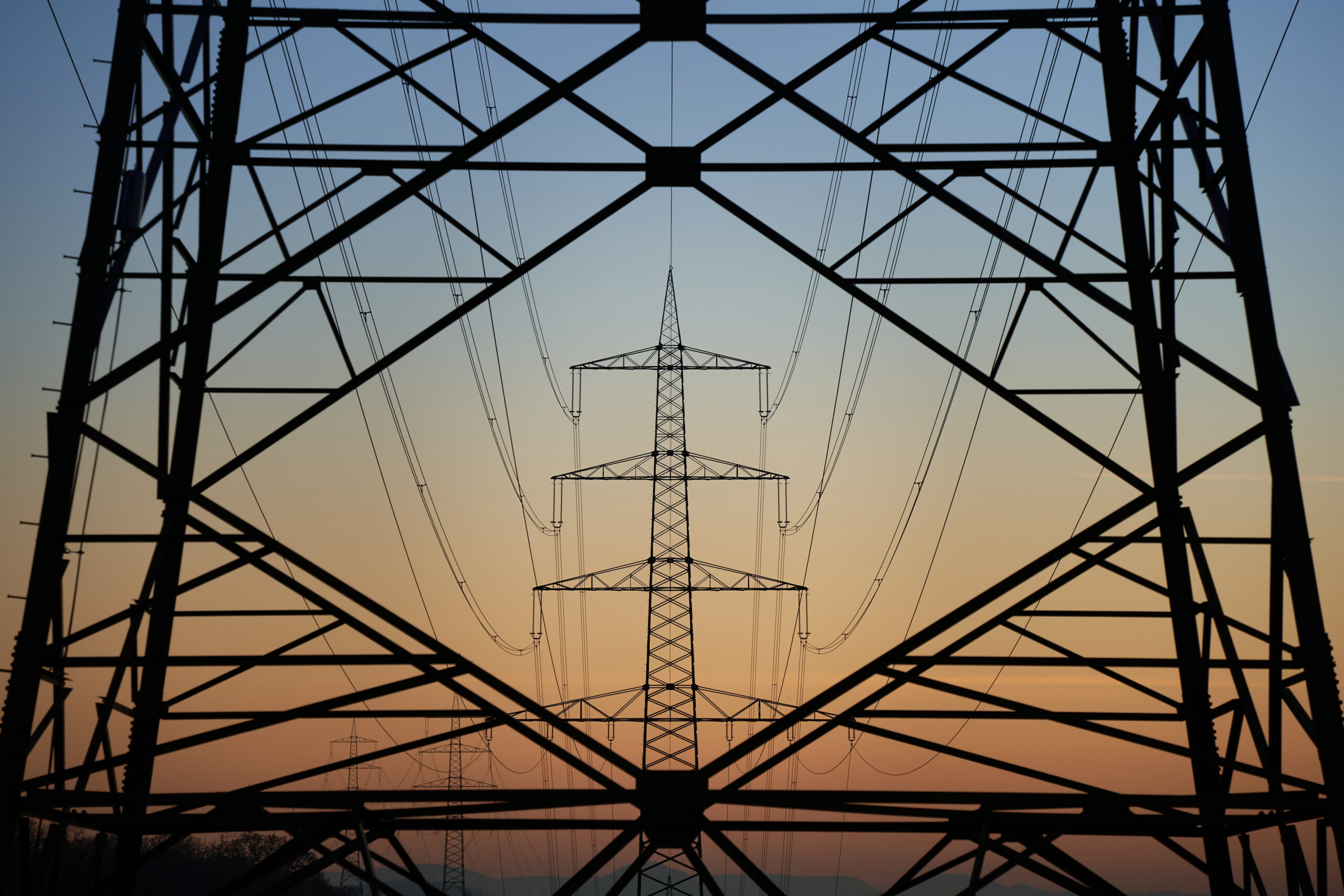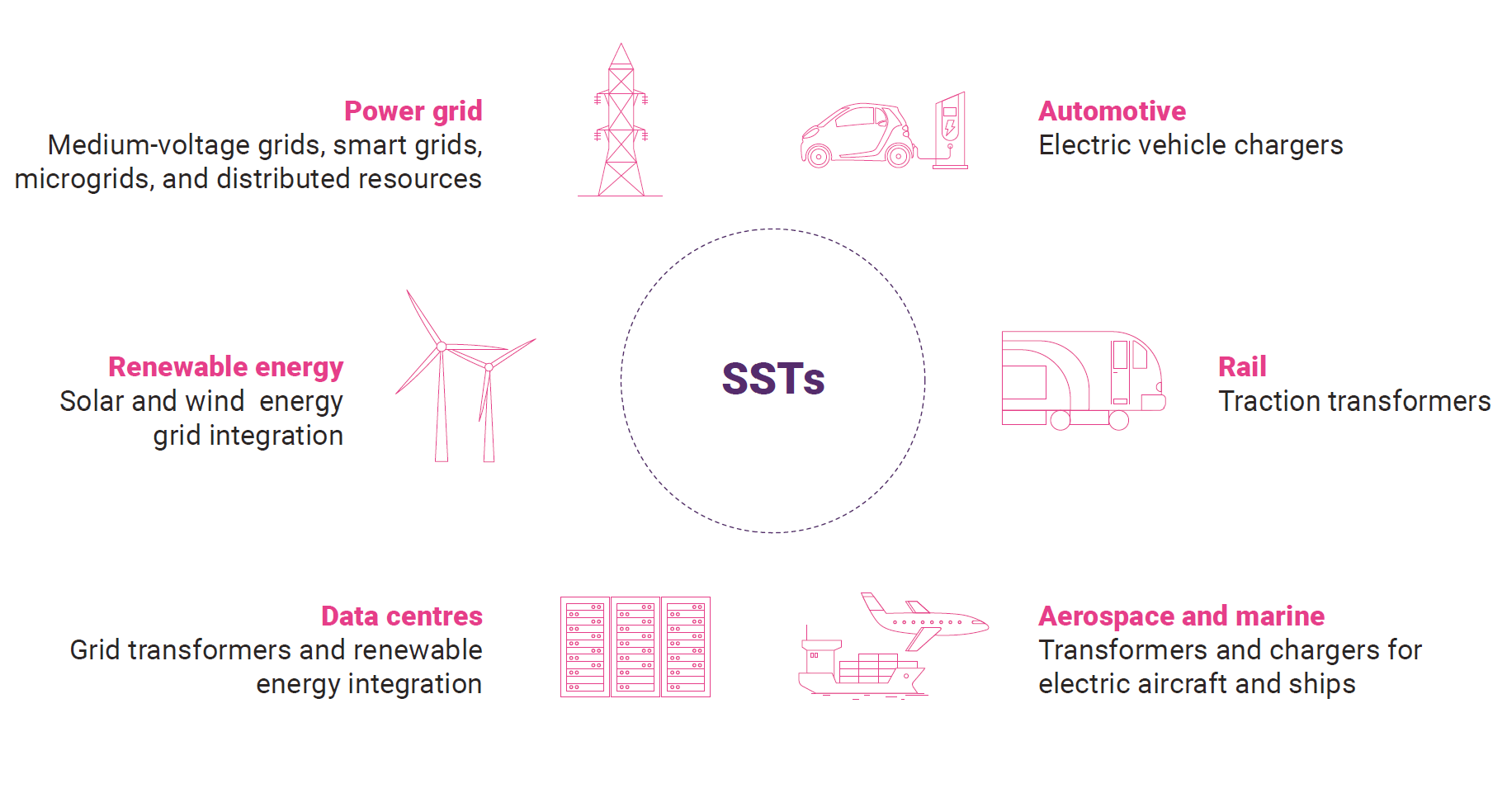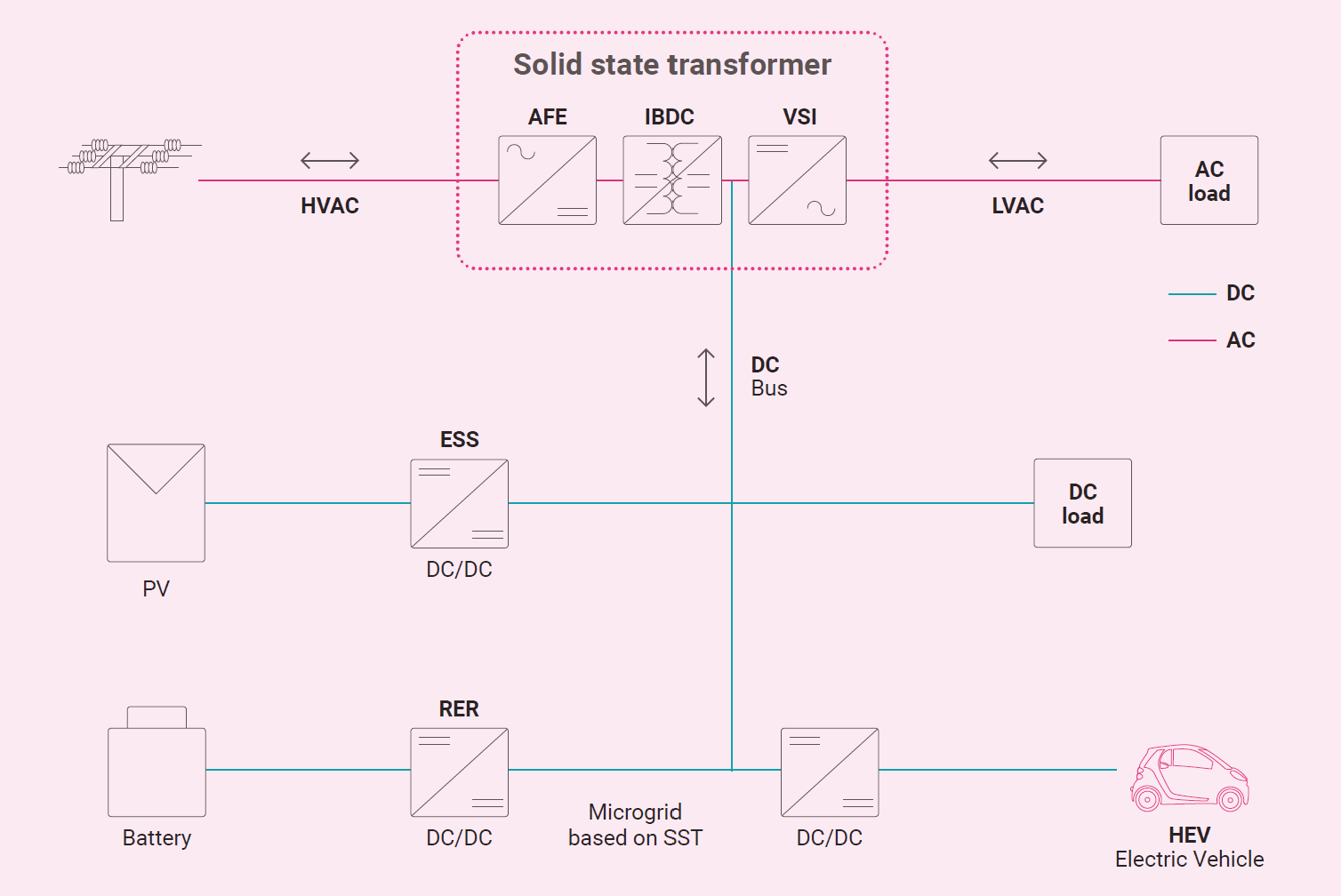In April this year, a major blackout occurred across Spain and Portugal, disrupting power for more than 10 hours and causing economic losses of an estimated $1.6 billion.
The new report, published today by Compound Semiconductor Applications (CSA) Catapult, says the UK is well placed to lead this technology due to its world-leading expertise in power electronics and compound semiconductors.
Compound semiconductors such as silicon carbide (SiC) and gallium nitride (GaN), are the material of choice for this application as they can handle higher voltages, operate at higher frequencies, and perform better at higher temperatures.
Even though SSTs are still a nascent technology, the SST market is projected to grow at a double-digit compound annual growth rate (CAGR) through to 2030. Similarly, the market for SiC power devices is expected to grow at over 20% CAGR over the same period.
The total global investment in power grid technology was projected to peak at nearly $400 billion in 2024, whilst global spending on renewables hit a record $735 billion in 2023.
In the UK alone, there are over 500,000 substations that could benefit from new SST upgrades. Between 2020 and 2023, over 100,000 traditional dielectric transformers were sold in the UK, generating over £90 million in revenue.
Compared to traditional transformers, SSTs are much smaller and lighter, better at regulating voltage and more flexible—they can also convert between AC and DC electricity and help send electricity back into the grid.
Outside of the energy grid, SSTs can also be used to manage power in EV chargers, data centres, and electric rail, marine and aerospace applications.








